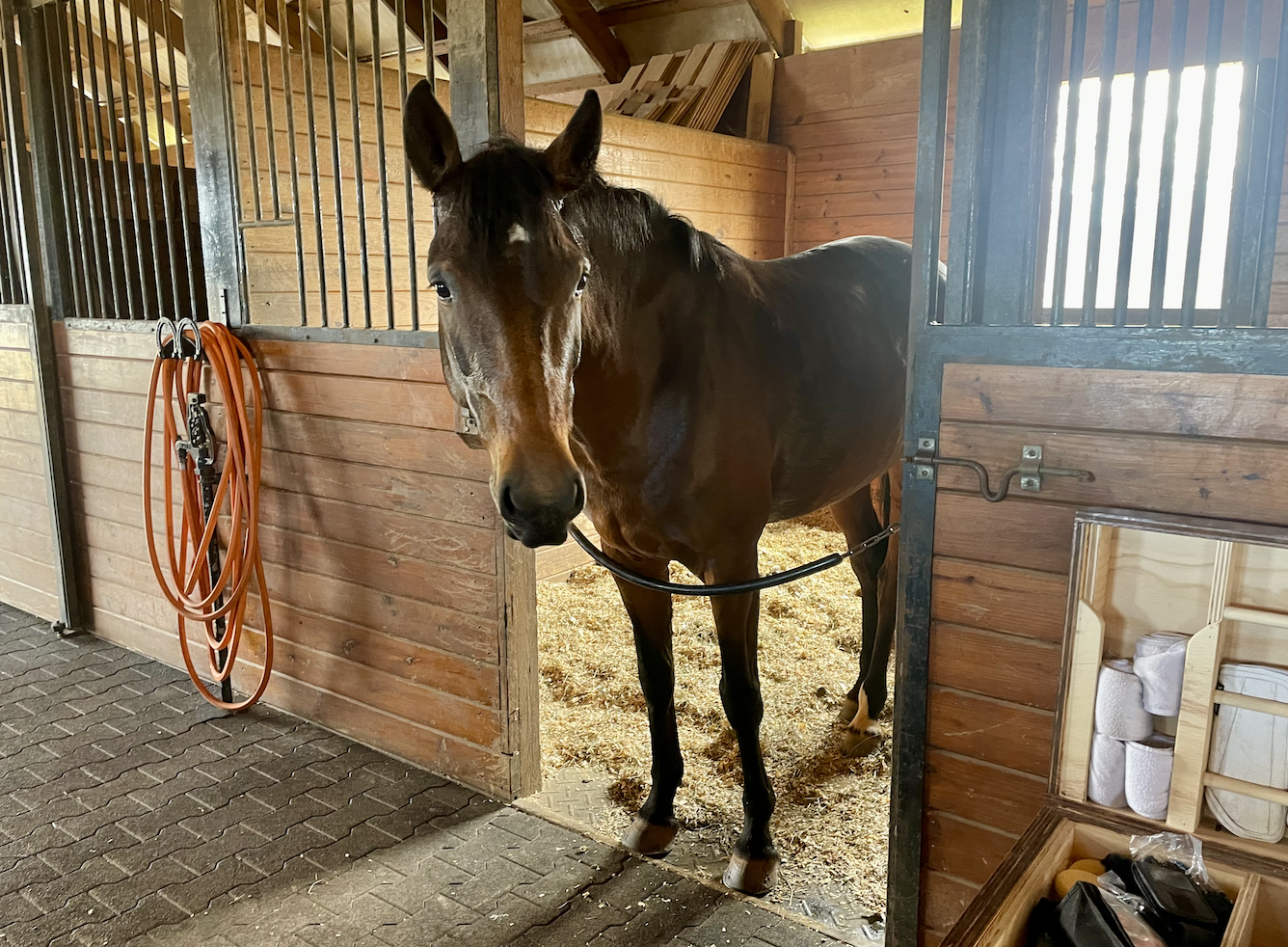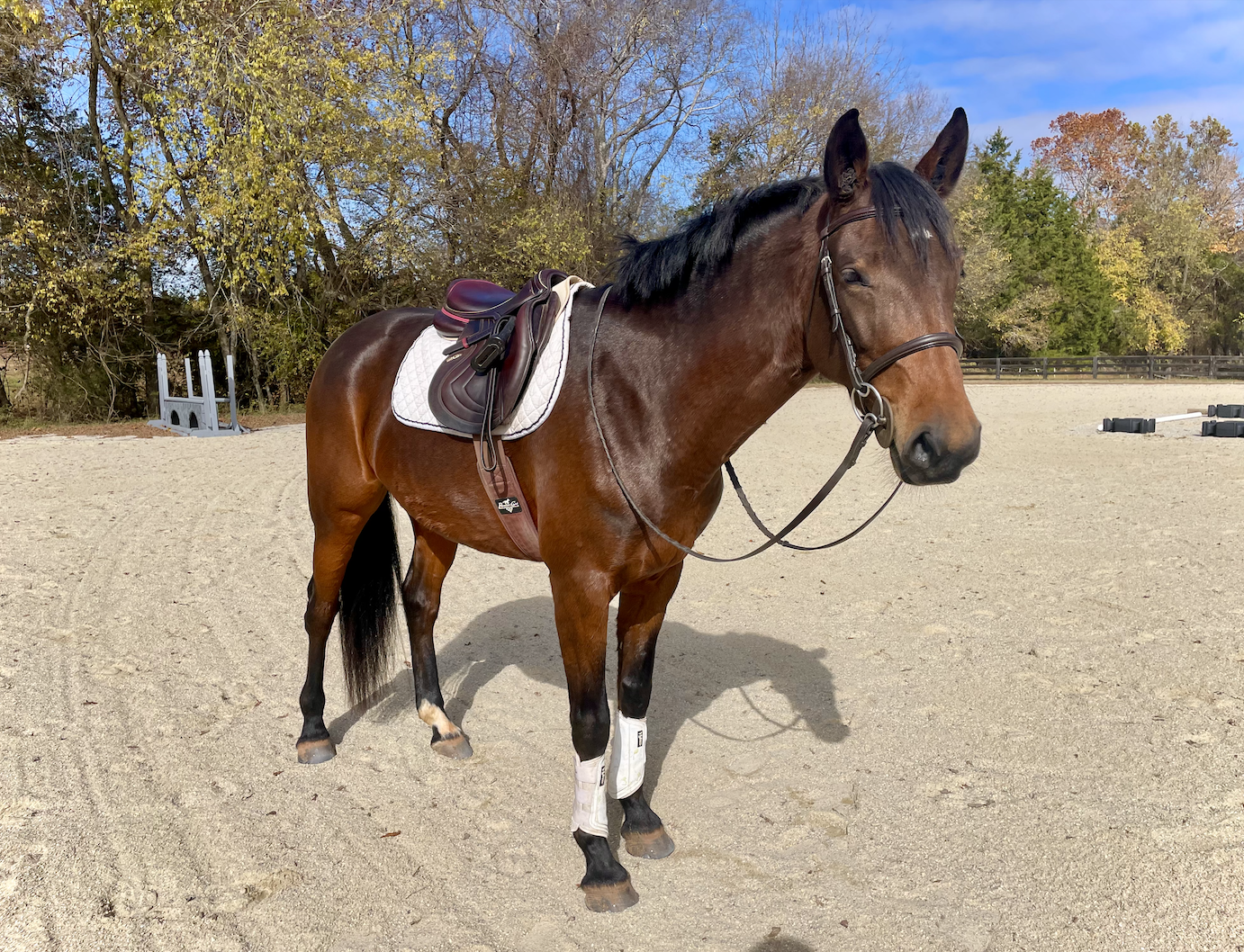The Vet Visit. Part One: Before
There are three types of vet visits.
The first and least anxiety producing are your annual check ups. These include vaccinations, getting a coggins pulled, or any other “just checking in” common place visits.
The second are your acute injuries. These include the scrapes and bumps that come with horse ownership - your horse comes in with a fat leg or a puncture wound or some other, “what on earth did you do to yourself” type of moment. The downside to this is that they’re unexpected and can completely derail your plans, or at their most tragic, end your partnership entirely. The upside (if you can call it that) is you know exactly why your vet is coming out. There’s no ambiguity when they have a lump the size of an orange on their head along with a cut.
The third and final type of visit are your lameness visits. These are, at least for me, the most anxiety producing. Why? When you have an acute injury, you already have the diagnosis - you can see the bump, bruise or cut that’s producing the injury. The only thing the vet needs to sort out is how bad, and what is the treatment. With lameness visits, especially those in the general vague “something just isn’t quite right” category, you don’t have a diagnosis yet. It could be a myriad of things, and oftentimes more than one thing.
That’s where I am right now.
After getting nowhere tangible with Azul’s trot-to-canter transition for the past year, I felt like it was time to go back to the diagnostic drawing board. I know that by now, Azul understands what we’re asking of her when we close the outside leg and sit deeper in the saddle while keeping her neck and shoulders straight. And based on how well Azul’s trot is coming along, I also don’t necessarily feel like she has an aversion to work, as has been told to me in the past. Sure, she’s got a solid mare streak in her - but I would not call her a particularly lazy or indifferent horse.
So while she could very well just be a stubborn baby, I’m not 100% convinced I’ve done everything I can to be 100% sure of that assessment.
The vet comes out on Tuesday. Until then, I’m doing the two most common things one does in the “before” phase of a lameness vet visit:
#1 - I’m obsessing over the symptoms and turning myself into an online “expert” for various joint and ligament injuries. There are three things I’m leaning towards based on her symptoms and history.
First, stifles. I believe that Azul could easily have loose stifles OR hitchy stifles. The former is exactly what it sounds like - the joint is loose and therefore unstable. The latter is when a ligament gets caught on her patella, very momentarily locking the joint into place and making certain things, namely trot/canter transitions and holding the canter around turns, very uncomfortable and difficult.
(That is a very very high level and poorly expressed version of it, but there are a lot of great online resources for IUPF if you wanted to get a more, you know, good description.)
Second, her SI joint could be painful. This is most likely going to be something that is apparent during the exam, but there’s a chicken/egg game to play. Is the SI pain the SOURCE of everything, or is she hurting in her SI joint because of something ELSE.
And third, though I’m trying not to think about it, she could have some sort of suspensory injury that’s presenting as stifle, SI, or hock. Let’s not talk about that one too much, though.
#2 - I’m feeling terribly guilty that so many symptoms lineup with one or more of the above potential causes, and it’s taken me MONTHS to call the vet out again. If the vet on Tuesday is able to diagnose something tangible that’s hurting her, then every single memory I have of using my stick, growling, spurring her, or otherwise forcing her to do something that was causing her physical pain will burn with an even more caustic sting. Especially since Azul has patiently stood every time for me to tack her up, and always willingly accepts the bridle, even knowing she’s about to hurt.
Azul still gives me lovely trot-work every time she comes out.
That’s what it’s like in the waiting phase, the “before” phase. It’s the Schrodinger’s Horse phase - when your horse is both injured and uninjured at the same time. I’m still riding her, though I’m not cantering. I’m still asking her to pay attention and give me nice trot transitions, though I’m not asking for extreme turns or collection. I’m still tacking her up for work, though I’m not putting her through a terribly vigorous workout.
I’m also overthinking. I’m hopeful that the vet comes up with a solid diagnosis, and I’m bracing for the actual guilt (as opposed to the conceptual guilt I’m feeling now) that will come with a solid diagnosis. I’m dreaming of months from now, when we’ve gone through the treatment and her canter departure is prompt and pain free. I’m dreading a potential worst-case - that we find arthritis or some sort of insidious, degenerative issue which will only continue to get worse.
The one thing I’m not hoping for is the diagnostics still turn up nothing. As dumb as that sounds, I would rather deal with an injury to fix and rehab and the guilt of the past year than no more information to go on. Just having to keep getting after Azul and pushing through “attitude.” Give me a physical issue than a behavioral one any day.
Stand by for Part Two: During.


